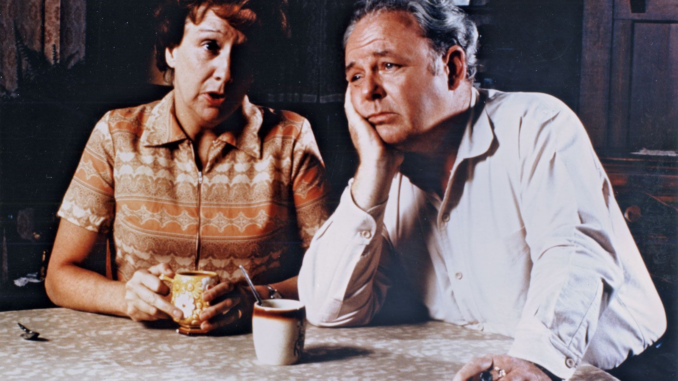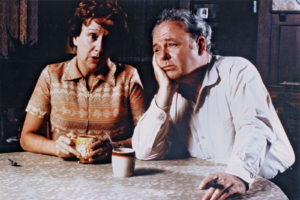
Introduction: Imagine a television show so bold, so politically charged, that it made people stop in their tracks and say, “Did they really just air that?” That’s the legacy of All in the Family. But behind the scenes, the show’s creation was even more dramatic and groundbreaking than you could ever imagine. What really went on behind the cameras? How did All in the Family become the controversial powerhouse that still influences television today? Buckle up, because we’re about to uncover the untold secrets of the show that broke all the rules and made television history.
Norman Lear’s Vision: The Man Who Dared to Dream Big At the center of it all was Norman Lear, a visionary who wasn’t afraid to challenge the status quo. In the early 1970s, America was at the height of political and social unrest. Lear saw an opportunity—an opportunity to use television not just for entertainment, but as a platform to tackle the tough, uncomfortable issues of the day. He wanted a show that would reflect the raw, unvarnished reality of American life. A show that didn’t shy away from the ugly truths about race, class, gender, and politics. And so, All in the Family was born.
But Lear wasn’t just creating a show—he was crafting a movement. His vision was to make a sitcom that felt like a conversation, one that would pull no punches and reflect the messy, complicated world outside the TV screen. But even Lear didn’t realize how much of a cultural earthquake he was about to unleash.
The Casting Choices That Changed Everything: Casting was key to All in the Family’s success, and the show’s iconic characters were brought to life by a group of actors who weren’t afraid to push boundaries. Carroll O’Connor’s portrayal of Archie Bunker was a revelation. O’Connor didn’t just play a racist, bigoted character—he made him human. Despite Archie’s flaws, O’Connor imbued him with a depth that made viewers empathize with him, even while they hated his views.
O’Connor famously didn’t want to take the role at first. In fact, he was initially reluctant to play such an unpleasant character. But after reading the script, O’Connor recognized that Archie Bunker was more than just a villain—he was a reflection of a certain segment of society that was resistant to change. O’Connor’s incredible performance turned Archie into one of TV’s most memorable and controversial characters.
And then there was Jean Stapleton, whose portrayal of Edith Bunker made her the emotional heart of the show. Edith’s quiet strength and unwavering love for Archie were what made her character so beloved. Jean Stapleton didn’t just play the sweet wife—she brought a level of complexity to Edith that many viewers didn’t expect.
Behind the Controversy: The Secrets They Didn’t Want You to Know Despite its success, All in the Family wasn’t without its challenges. The show faced constant backlash from conservative groups, who accused it of promoting “immorality” and “disrespect.” But that didn’t stop Norman Lear. In fact, it only fueled his desire to keep pushing boundaries. One of the show’s most controversial episodes, “The Draft Dodger,” explored the Vietnam War, and it was met with such outrage that CBS almost pulled it from the air.
Lear wasn’t afraid of controversy. In fact, he reveled in it. He understood that the best art often comes from the most uncomfortable places, and All in the Family was proof of that. Lear knew that by challenging the status quo, the show could spark important conversations—ones that would continue long after the credits rolled.
The Lasting Impact: Why All in the Family Is Still Relevant Today Fast forward to today, and the cultural impact of All in the Family can still be felt. The show’s irreverent approach to race, gender, and politics has inspired countless shows that followed. Without All in the Family, there would be no The Simpsons, no South Park, and no Family Guy—shows that take the same no-holds-barred approach to social issues.

All in the Family was more than just a TV show—it was a movement. It challenged the way we think, the way we act, and the way we see the world. It proved that television could be more than just mindless entertainment—it could be a mirror to society, reflecting our flaws and forcing us to confront them.
Today, as we continue to grapple with issues of race, class, and politics, the legacy of All in the Family remains as important as ever. It was a show that didn’t just break the rules—it created new ones. And for that, it will always be remembered as one of the most groundbreaking TV shows in history.
Conclusion: The secrets behind All in the Family aren’t just about what happened on screen—they’re about the bold vision that led to a show that changed the world. Norman Lear’s masterpiece wasn’t just a show—it was a revolution in the making. And the legacy it left behind is one that still shapes the television landscape to this very day.
